-
 bitcoin
bitcoin $112195.049338 USD
2.42% -
 ethereum
ethereum $4124.915858 USD
2.81% -
 tether
tether $1.000570 USD
0.02% -
 xrp
xrp $2.861568 USD
2.25% -
 bnb
bnb $1000.346670 USD
3.04% -
 solana
solana $209.070819 USD
3.38% -
 usd-coin
usd-coin $0.999870 USD
0.02% -
 dogecoin
dogecoin $0.235379 USD
2.65% -
 tron
tron $0.335681 USD
-0.20% -
 cardano
cardano $0.803501 USD
3.38% -
 hyperliquid
hyperliquid $47.120881 USD
3.56% -
 chainlink
chainlink $21.501300 USD
3.44% -
 ethena-usde
ethena-usde $1.000571 USD
0.02% -
 avalanche
avalanche $29.793378 USD
3.62% -
 stellar
stellar $0.366964 USD
2.42%
What is an ASIC miner and is it better than GPU mining?
ASIC miners offer unmatched efficiency for specific cryptocurrencies like Bitcoin, but lack flexibility, while GPUs provide versatile, adaptable mining for various coins with better resale value.
Aug 08, 2025 at 04:01 pm
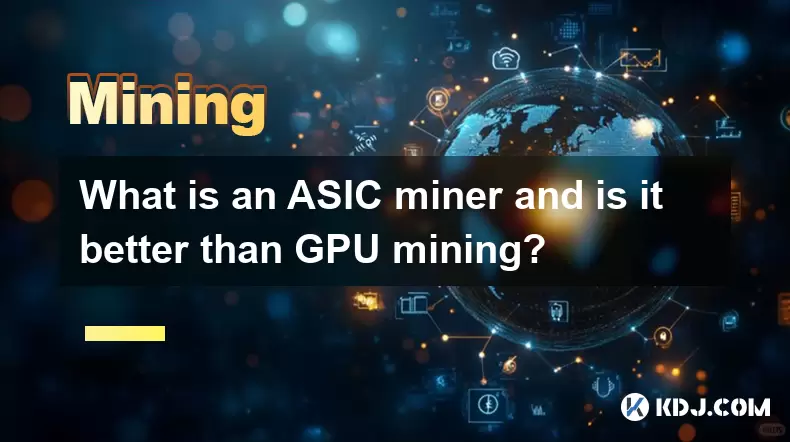
Understanding ASIC Miners in Cryptocurrency Mining
An ASIC miner, or Application-Specific Integrated Circuit miner, is a specialized hardware device designed for the sole purpose of mining cryptocurrencies. Unlike general-purpose computing hardware, ASICs are built to execute a single cryptographic hashing algorithm efficiently. For example, an ASIC built for Bitcoin mining uses the SHA-256 algorithm and cannot mine coins that rely on different algorithms like Ethash or Scrypt. The primary advantage of ASIC miners lies in their extreme efficiency and processing power when performing the specific task they are designed for. These devices can deliver hash rates that are orders of magnitude higher than general-purpose hardware while consuming relatively less power.
Because ASICs are optimized at the silicon level, they outperform other mining hardware in both speed and energy consumption for their target algorithm. This makes them the preferred choice for large-scale mining operations focused on major cryptocurrencies such as Bitcoin. However, their lack of flexibility is a significant limitation. If a network changes its consensus algorithm or if miners wish to switch to a different coin, the ASIC becomes obsolete or severely underutilized.
How GPU Mining Differs from ASIC Mining
GPU mining refers to using Graphics Processing Units, typically found in gaming computers or workstations, to perform cryptocurrency mining. GPUs are general-purpose processors capable of handling a wide range of computational tasks, including rendering graphics and solving cryptographic puzzles. Their architecture allows them to perform many calculations simultaneously, making them suitable for mining coins that use memory-hard algorithms like Ethash (Ethereum) or KawPow (RVN).
One major advantage of GPU mining is versatility. A single GPU can mine multiple cryptocurrencies by simply changing the mining software and configuration. This adaptability allows miners to switch between coins based on profitability, network difficulty, or market conditions. Additionally, GPUs retain residual value after mining, as they can be resold for gaming, video editing, or machine learning applications. In contrast, ASICs have minimal resale value outside of mining due to their single-purpose design.
Performance Comparison: Hash Rate and Power Efficiency
When evaluating mining hardware, two critical metrics are hash rate (the number of calculations a device can perform per second) and power efficiency (how much electricity is consumed per unit of hash rate, measured in joules per terahash). ASIC miners dominate in both categories for their target algorithms. For instance, a modern Bitcoin ASIC such as the Antminer S19 Pro can achieve a hash rate of 110 TH/s with a power efficiency of approximately 29.5 J/TH. In comparison, even a high-end GPU like the NVIDIA RTX 4090 achieves only about 120 MH/s on Ethash with a power draw of around 350 watts, translating to significantly lower efficiency for SHA-256-based mining.
This stark difference means that for networks like Bitcoin, where SHA-256 is used, ASICs are the only viable option for profitable mining. The energy savings and performance gains make GPU mining on such networks economically unfeasible. However, for altcoins that implement ASIC-resistant algorithms, GPUs remain competitive and often the preferred method due to algorithmic design choices meant to promote decentralization.
Cost and Accessibility of ASIC vs GPU Setups
The initial investment for ASIC mining is typically higher than for GPU mining. A single ASIC unit can cost $2,000 to $5,000, depending on model and availability, and requires additional infrastructure such as cooling, power supplies, and potentially noise-dampening enclosures. In contrast, a mid-range GPU setup can be assembled for $1,500 to $3,000, including multiple GPUs, a motherboard, PSU, and frame.
However, the total cost of ownership must include electricity, maintenance, and lifespan. ASICs, while more efficient, generate substantial heat and noise, often requiring dedicated spaces. They also have a shorter useful life if the target cryptocurrency becomes unprofitable or undergoes a hard fork. GPUs, being more flexible, can be repurposed or sold more easily. For hobbyists or small-scale miners, GPU mining offers lower entry barriers and greater flexibility.
Operational Setup: Configuring an ASIC Miner
Setting up an ASIC miner involves several precise steps to ensure optimal performance and safety:
- Unbox and inspect the ASIC unit for any physical damage during shipping
- Connect the power supply unit (PSU) that matches the ASIC’s voltage and amperage requirements—most require 220V input
- Link the ASIC to your local network using an Ethernet cable; Wi-Fi is not recommended due to stability issues
- Power on the device and wait for it to boot, which may take 2–5 minutes
- Access the miner’s web interface by entering its IP address into a browser
- Navigate to the mining configuration section and input your mining pool details, including pool URL, port, and worker credentials
- Save settings and restart the miner to begin hashing
- Monitor temperature and hash rate through the dashboard to confirm stable operation
It is crucial to ensure proper ventilation and avoid placing the ASIC in enclosed spaces. Regular firmware updates from the manufacturer can improve efficiency and security.
Frequently Asked Questions
Can I use an ASIC miner to mine Ethereum?No, Ethereum currently uses the Ethash algorithm, which is designed to be ASIC-resistant. Most ASICs are built for SHA-256 or Scrypt, making them incompatible with Ethereum’s mining protocol. Attempting to use a SHA-256 ASIC on Ethereum will result in zero output.
Is GPU mining still profitable in 2024?Profitability depends on the cryptocurrency, electricity cost, and hardware efficiency. For coins like Ravencoin (RVN) or Ergo (ERG), which are GPU-mineable and resistant to ASICs, profitability can still exist with low electricity rates and efficient GPUs. Mining calculators such as WhatToMine can help assess current returns.
Do ASIC miners require special cooling?Yes, ASIC miners generate intense heat due to their high power consumption. Operating them in poorly ventilated areas can lead to thermal throttling or hardware failure. Using industrial fans, exhaust systems, or air-conditioned rooms is recommended for sustained operation.
Can I mine multiple coins simultaneously with a GPU?While a single GPU cannot mine multiple coins at the exact same time, miners can use switching software like NiceHash or multi-algorithm platforms to automatically switch between coins based on profitability. This maximizes earnings without manual intervention.
Disclaimer:info@kdj.com
The information provided is not trading advice. kdj.com does not assume any responsibility for any investments made based on the information provided in this article. Cryptocurrencies are highly volatile and it is highly recommended that you invest with caution after thorough research!
If you believe that the content used on this website infringes your copyright, please contact us immediately (info@kdj.com) and we will delete it promptly.
- Navigating Misinformation: Ensuring Safety in the Pi Network Ecosystem
- 2025-09-29 14:25:13
- XRP Price Prediction: September 29th's Crypto Comeback?
- 2025-09-29 14:25:13
- Polkadot vs. Lyno AI: Decoding the Price Forecast and AI Revolution
- 2025-09-29 14:30:01
- Trump's Brahmastra: Can Stable Coin Save the US Economy?
- 2025-09-29 14:45:17
- Pi Movement: Utility, Community, and the $314,159 Dream
- 2025-09-29 14:45:17
- Ruvi AI: Revolutionizing the Creator Economy with AI-Powered Crypto
- 2025-09-29 14:30:01
Related knowledge
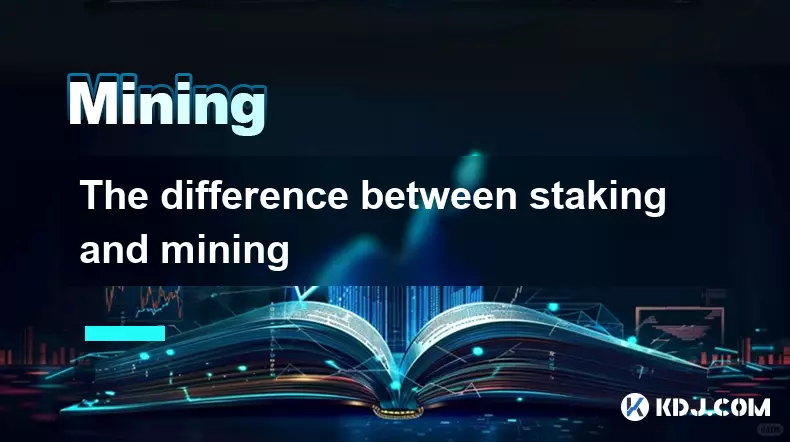
The difference between staking and mining
Sep 24,2025 at 05:18am
Understanding Staking in the Cryptocurrency Ecosystem1. Staking involves holding funds in a cryptocurrency wallet to support the operations of a block...
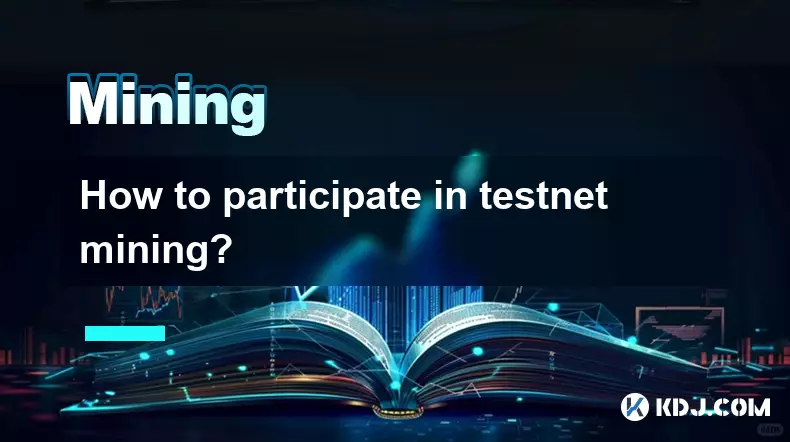
How to participate in testnet mining?
Sep 22,2025 at 09:18am
Understanding Testnet Mining in the Crypto Ecosystem1. Testnet mining is a method used by blockchain developers to simulate real-world conditions on a...

How to dispose of abandoned mining machines?
Sep 19,2025 at 08:19pm
Assessing the Condition of Abandoned Mining Rigs1. Begin by inspecting each mining machine for visible damage, corrosion, or missing components. Machi...

How to identify high-quality mining pools?
Sep 21,2025 at 03:19pm
Reputation and Track Record1. A mining pool’s reputation is built over time through consistent performance and transparency. Pools that have operated ...
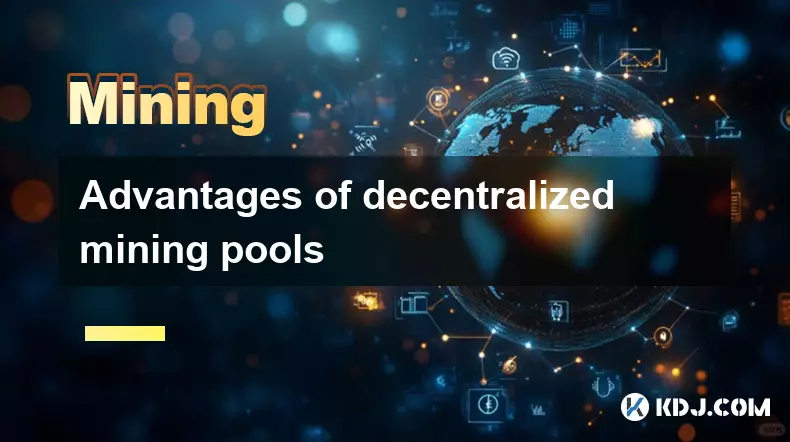
Advantages of decentralized mining pools
Sep 20,2025 at 04:36pm
Enhanced Security and Resistance to Censorship1. Decentralized mining pools operate on blockchain-based smart contracts, eliminating the need for a ce...
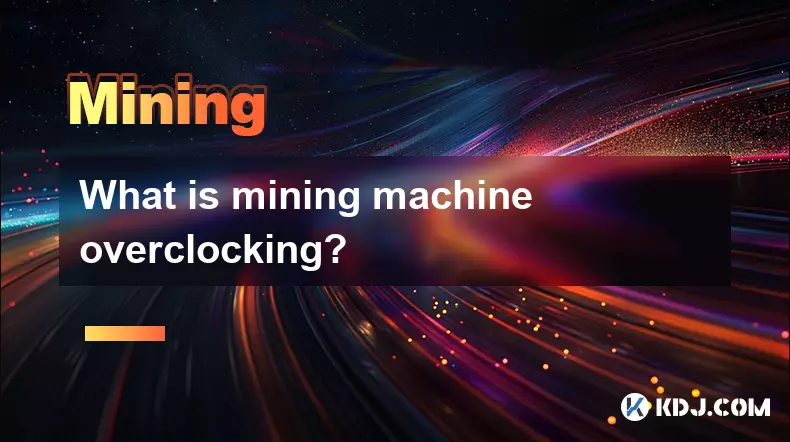
What is mining machine overclocking?
Sep 21,2025 at 07:19pm
Understanding Mining Machine Overclocking1. Mining machine overclocking refers to the process of increasing the operating frequency of a cryptocurrenc...

The difference between staking and mining
Sep 24,2025 at 05:18am
Understanding Staking in the Cryptocurrency Ecosystem1. Staking involves holding funds in a cryptocurrency wallet to support the operations of a block...

How to participate in testnet mining?
Sep 22,2025 at 09:18am
Understanding Testnet Mining in the Crypto Ecosystem1. Testnet mining is a method used by blockchain developers to simulate real-world conditions on a...

How to dispose of abandoned mining machines?
Sep 19,2025 at 08:19pm
Assessing the Condition of Abandoned Mining Rigs1. Begin by inspecting each mining machine for visible damage, corrosion, or missing components. Machi...

How to identify high-quality mining pools?
Sep 21,2025 at 03:19pm
Reputation and Track Record1. A mining pool’s reputation is built over time through consistent performance and transparency. Pools that have operated ...

Advantages of decentralized mining pools
Sep 20,2025 at 04:36pm
Enhanced Security and Resistance to Censorship1. Decentralized mining pools operate on blockchain-based smart contracts, eliminating the need for a ce...

What is mining machine overclocking?
Sep 21,2025 at 07:19pm
Understanding Mining Machine Overclocking1. Mining machine overclocking refers to the process of increasing the operating frequency of a cryptocurrenc...
See all articles










































































